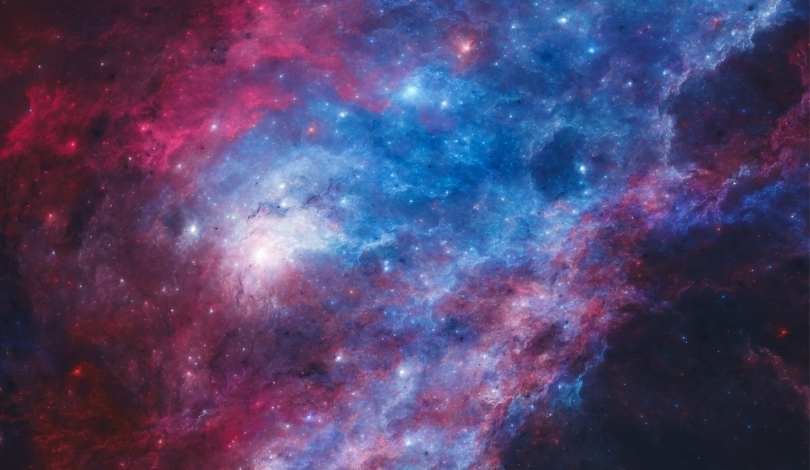Astronomers have unraveled the mystery behind AT 2021hdr, a celestial event initially believed to be a supernova. Observed first in March 2021, the object exhibited unusual outbursts every 60–90 days, prompting further investigation. These periodic bursts led researchers to explore alternative explanations beyond typical supernova behavior, ultimately identifying a binary black hole system as the source.
Astronomers first detected AT 2021hdr through high-energy light bursts, which did not align with traditional supernova characteristics. Subsequent observations revealed a consistent pattern of outbursts, which suggested the involvement of more complex astrophysical phenomena. This regularity was key to distinguishing AT 2021hdr from other transient events.
What Causes the Periodic Light Bursts?
The periodic light bursts are the result of a massive interstellar cloud interacting with a pair of binary black holes. As the black holes orbit each other, they disturb and consume the gas cloud, leading to consistent emissions of ultraviolet and X-ray light.
How Did Observations Confirm the Binary Black Hole Model?
Using the Neil Gehrels Swift Observatory, researchers detected oscillations in both ultraviolet and X-ray wavelengths that matched the predicted patterns from binary black hole simulations. These observations provided strong evidence supporting the binary black hole hypothesis.
What Are the Future Implications of This Discovery?
The findings suggest that similar binary black hole systems might be detectable through their interactions with surrounding gas clouds. Ongoing observations will help refine models of black hole behavior and their impact on host galaxies, offering deeper insights into cosmic evolution.
Earlier studies had proposed that AT 2021hdr could be a tidal disruption event, where a star is torn apart by a black hole. However, the regularity of the outbursts did not support this theory. The new model involving binary black holes interacting with a gas cloud provides a more consistent explanation for the observed phenomena.
The binary black holes in AT 2021hdr have a combined mass of approximately 40 million Suns and orbit each other every 130 days. Scientists estimate that these black holes will merge in about 70,000 years.
“Without the passing cloud, these black holes might have remained undetected,”
highlighting the significance of the cloud’s role in making the system observable.
Future research will focus on monitoring the system to refine existing models and explore how such binary black holes influence their surrounding environments. Understanding these interactions is crucial for comprehending the dynamics within galaxies and the ultimate fate of supermassive black holes.
The identification of a binary black hole system through periodic light bursts marks a significant advancement in astrophysics. This discovery not only clarifies the nature of AT 2021hdr but also opens avenues for detecting similar systems in the universe. Continued observation and analysis will enhance our understanding of black hole interactions and their broader cosmic implications.










